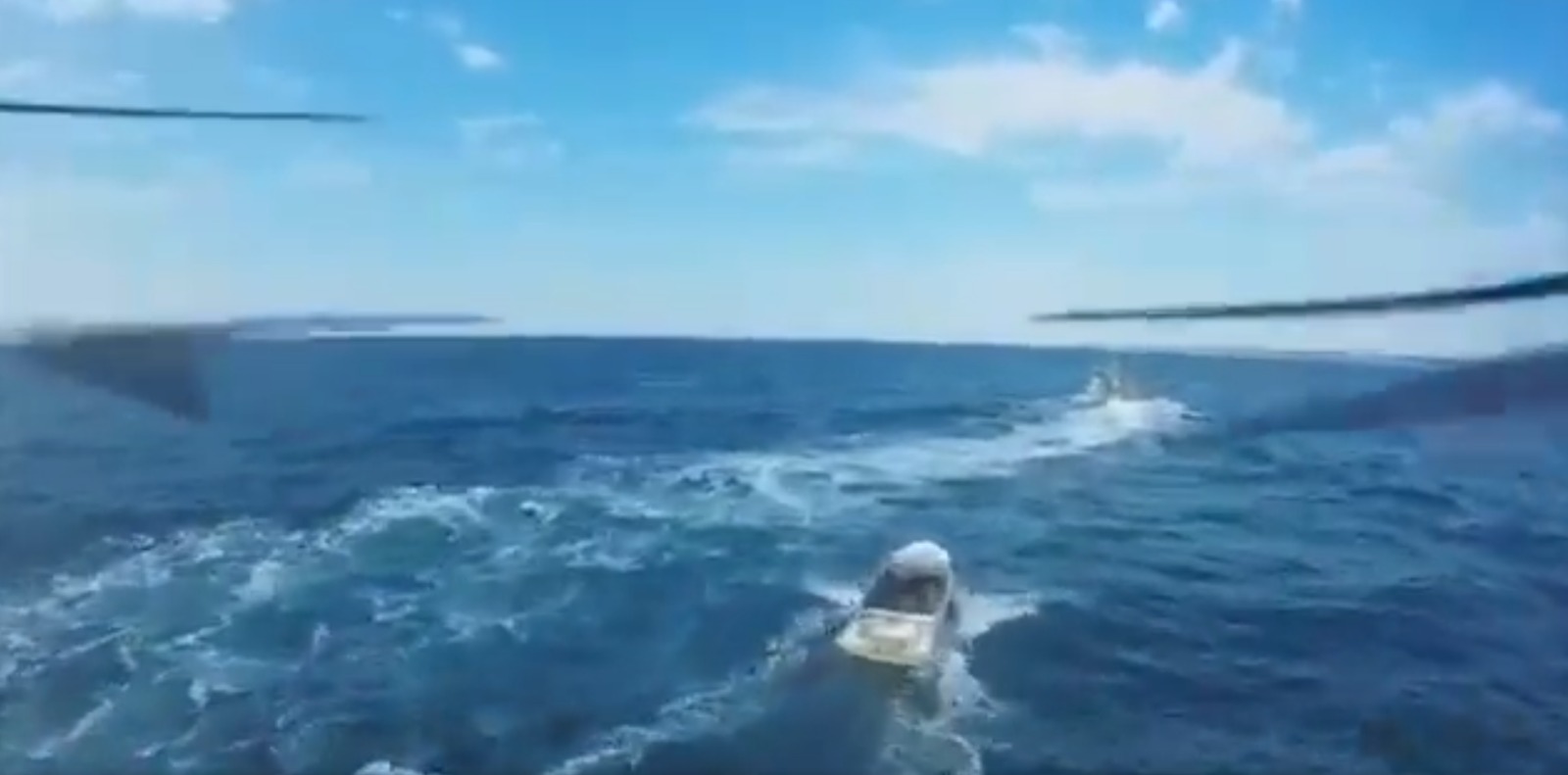In what appears to be a promising way to tackle Ukrainian kamikaze drone boat attacks, Russia is testing a loitering munition that can chase and destroy unmanned explosive-laden vessels.
World’s Biggest Espionage? Russia Celebrates 110th Anniversary Of ‘Agent’ Who Played A Key Role In Stealing Nuclear Tech
Introducing the aircraft will lessen the load on the small and medium-sized missile boats, jets, and helicopters of the Russian Navy’s Black Sea Fleet (BSF) that are used to destroy the weaponized Unmanned Surface Vessels (USV).
The war in the Black Sea has emerged as a full-fledged theater of its own, with the US and North Atlantic Treaty Organization (NATO) backed strikes on the BSF since October 2022 forced it to finally relocate to Novorossiysk in far southwestern Russia, from Crimea in Sevastopol.
The Crimean Peninsula was annexed by Russia in 2014, which it later declared to have been assimilated via a referendum, claiming ethnic locals overwhelmingly voted to be a part of the Russian Federation.
Black Sea Fleet Has Been Embattled Since October
Eight months after the war began in February 2022, the BSF Headquarters established in Sevastopol came under constant unsuccessful attacks. But September 22 aerial strikes using British-French Storm Shadow cruise missile strikes brought down the entire building, forcing Russian planners to relocate the BSF HQ to Novorossiysk.
The EurAsian Times analyzed Russia adopted this strategy to bait Ukrainians into continuing the strikes. This was because Novorossiysk, unlike Crimea, is an internationally and NATO-recognized Russian sovereign territory.
Attacking it would legitimize Moscow bombing NATO territory in Poland or Romania, from where the Ukrainian military receives technical and logistical support or shooting down the E-3C AWACS, RC-135 Rivet EW aircraft, or the MQ-4 Global Hawk drone that helps Ukraine identify Russian radar positions and supply targetting data.
Video from a mystery Russian FPV drone being tested to counter Ukrainian unmanned kamikaze boats that periodically launch attacks on the Russian fleet. The drone explodes mid-air in air burst mode. pic.twitter.com/2RUneagUf8
— EurAsian Times (@THEEURASIATIMES) October 16, 2023
But with the West’s plan to make Russian control over the Peninsula “untenable” to leverage its loss to oust Russia from proper Ukrainian lands in Donbas and southern Ukraine, the new FPV drone’s introduction to the naval battlespace remains relevant.
Footage From Under-Testing Kamikaze Drone
Many Russian Telegram groups saw footage emerge from a drone, showing the UAV’s perspective, where it is taking off from a coast and approaching a smaller unmanned boat trailing behind a larger vessel.
The video soon cuts to a separate footage capturing the drone diving down on the target boat before exploding just above it. The FPV footage suggests it is a quadcopter, given the two rotors seen above the camera.
Moreover, the FPV footage and the separate video that records the hit are not from the original camera sources but rather shot off other screens. Possibly, it seems to be a very low-level violation of operational security (OPSEC), causing the testing footage to be leaked.
Also, judging by the explosion in the footage, the drone warhead does not require direct contact and can be detonated remotely over a target. This means the fast-moving, highly mobile, and nimble Ukrainian USVs are less likely to be able to outmaneuver the drone. The UAV just has to explode around it, and any shrapnel hitting the kamikaze drone boat’s warhead in the front is enough to ignite and explode it.
Even if the warhead is not hit, an explosion above the radio communications or satellite guidance antennae would knock the systems and cause the boat to veer out of control.

Big Relief For BSF Assets
The BSF already has a series of small and medium-sized missile boats and large radar-guided patrol boats that undertake sea-borne tasks or destroy the Ukrainian USVs. This is apart from Russian naval aviation, including MiG-29 fighters and SU-30SM jets that have strafed small commando-carrying motorboats in recent incidents. Even Kamov Ka-27 helicopters are used to detect and attack the boats.
But with Ukraine undeterred despite their attacks being beaten back, it is unlikely to stop probing the BSF and look for weaknesses to score a significant victory. The BSF is, however, largely intact, and all its capital ships — except the loss of the Moskva last year — are safe in the harbor.
But sinking even a large patrol boat serves as a tactical victory for Kyiv, and the introduction of the Russian drone serves as a significant force multiplier in protecting its vessels.
Moreover, all drones also effectively serve as surveillance platforms as well. This FPV drone can also briefly give the controllers an overhead picture of the sea before it flies into its target, which can be communicated to other BSF sea and airborne assets, defeating a kamikaze USV swarm attack.
- The author can be reached at satamp@gmail.com
- Follow EurAsian Times on Google News




